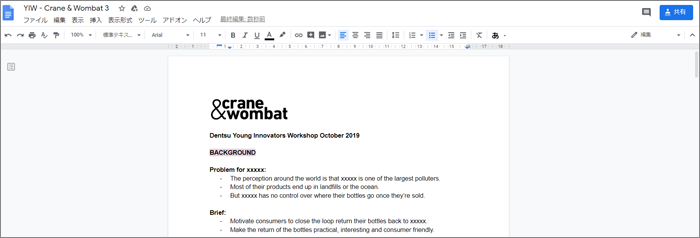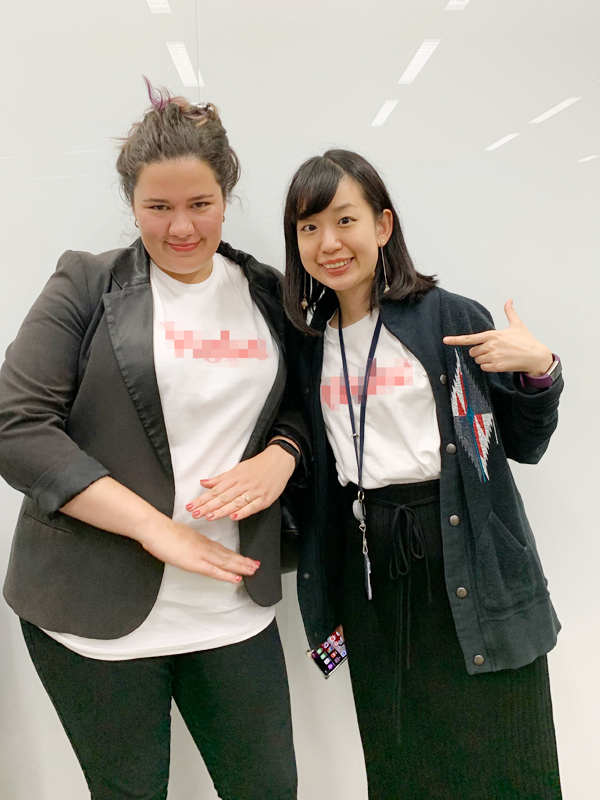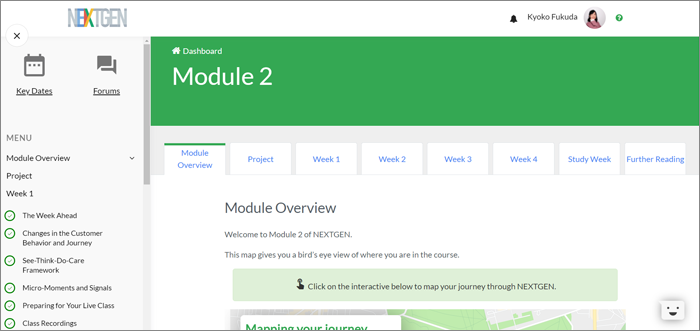At Dentsu Inc., remote work began in late February. My department, the Global Business Center, had many employees utilizing telework even before the COVID-19 outbreak, with several colleagues working from home at least twice a week. However, doing it every day is a different story. Many people were likely confused by the shift to exclusively online meetings.
When you never meet anyone, working on a remote island feels no different from working in Tokyo. Borders and company frameworks gradually blur and dissolve through digital means. While this offers the benefit of working freely with anyone, anywhere, it also has the drawback of making it harder to foster a sense of community and shape a distinct corporate identity.
Fortunately, I had participated in two internal training programs before the pandemic that focused heavily on online collaboration with overseas team members. This time, I'd like to share the know-how gained from those collaborative efforts.
YIW: Remote 1-on-1 Collaboration with Partners
The first internal training program I participated in was the "Young Innovators Workshop." This is a workshop focused on developing global talent, primarily targeting young professionals involved in solution creation. After the challenge and overseas partner are announced, Japanese and overseas participants team up over approximately two months to tackle planning and presentations.
Two people meeting for the first time collaborated remotely, using online tools to develop solution ideas and create presentations. They met face-to-face for the first time in Japan during the actual workshop two months later. There, they presented in English to the visiting ECD (Executive Creative Director) from the overseas office, and rankings were determined through a competition format.
I was paired with Isha, an Art Director at BWM, an overseas Dentsu Group creative agency based in Australia. BWM joined the overseas Dentsu Group in 2015, and their online tools aren't standardized with the Dentsu Japan Network. Our conversation started with the basic question: what tools do you normally use?
"Do you use Evernote?"
"I have an account, but I'm not really used to it..."
"Teams doesn't seem to integrate well with BWM, so I'll email IT. For now, let's call via Facebook."
To start with, we quickly sent LinkedIn and Facebook requests to get to know each other better. However, we connected with such awkwardness that it was hard to believe we were from the same group company.
Furthermore, the ECD assigned to advise our group was based in Thailand. Setting up a video conference between Australia, Japan, and Thailand was extremely confusing, requiring consideration of three different time zones. And precisely because of these time differences, the number of meeting times effective within everyone's working hours became severely limited. The key point here was undoubtedly the initial schedule management.
First, we set up weekly meetings with our partner, Isha, leading up to the presentation date. We also scheduled meetings with the ECD at points where the plan was sufficiently developed to receive feedback, ensuring all schedules were coordinated upfront. Deciding on the overall meeting structure allowed us to efficiently plan the timeline for finalizing the overall concept and polishing the materials.
Of course, one approach is to push ideas to the absolute last minute before the presentation and rush to finish the materials. However, since our partner was traveling to Japan right before the presentation, limiting our time to collaborate in person, this remote scheduling approach proved highly effective for us. Deciding the broad framework early freed up time for fine-tuning the presentation and for me, who wasn't accustomed to presenting in English, to practice. Furthermore, our proposal involved T-shirt production. We even managed to have our partner create a mock-up logo and place an order with a vendor to produce a T-shirt prototype.
Visualizing thoughts and building relationships on Google Docs
Another tool that helped energize communication with our partner was Google Docs. First, we used it to find relevant consumer data from government statistics and other sources to align our understanding of the current market. We pasted links to sources within the Google Doc and added comments like "What we're thinking based on this data." We also searched for and filled in publicly available information, such as existing initiatives by potential clients and news about competitors.
Since the target market wasn't Japan, aligning market understanding through unspoken understanding, as Japanese people often do, wasn't possible. Therefore, using data to align our understanding of the current situation was a crucial task. It wasn't necessary to create polished materials for this. By putting the facts and the thought process of "what we were thinking based on them" into the document before the meeting and commenting on each other's input, we found it enabled meaningful discussions.

The Google Docs we actually used
After that, we moved on to incorporating the campaign concepts each of us had envisioned. We added copy, images, text, photos, and illustrations. Especially when communicating with the art director, conveying ideas visually made communication much smoother. When the language isn't your native tongue, the expressive power of photos, illustrations, and other visuals was incredibly helpful.
By communicating the entire thought process via Google Docs, we effectively filled the gap in communication outside our weekly meetings, like a 24/7 exchange diary. When both parties are familiar with the tool and constantly accessing it, digital work becomes exponentially more efficient. I feel that as long as the volume of communication is guaranteed, it's possible to produce high-quality output even without face-to-face interaction.
Especially in one-on-one situations, since you're always the one responding, you start looking forward to what the other person will contribute next, and the relationship deepens. We truly began to feel like partners. After two months of communication during the Young Innovators Workshop, when we met in person for the first time, there was a physical gap – like realizing, "Oh, they're this tall" – but beyond that, we had already built a relationship as deep partners.

Wearing the T-shirt I created with my partner Isha, we took a commemorative photo.
Nextgen: A Group Endeavor
Nextgen is a six-month, 100% English, 100% online training program developed by Google. It enhances their online digital marketing course, "Squared Online," for Dentsu Group employees worldwide. Originally designed as a fully online program to accommodate employees of the Dentsu Group worldwide, participants take courses taught by industry experts—similar to general MOOCs (Massive Open Online Courses)—while also completing monthly presentations through remote group work on assigned tasks.

Actual Nextgen curriculum screen
Unlike YIW, which is advanced with a partner, this requires collaboration with a team of about eight members. While we're still struggling through it, I feel the differences in our advertising and marketing backgrounds more than the differences in national characteristics.
While Dentsu Inc.'s domestic headquarters is a full-service agency handling both media buying and creative production, overseas operations are often separate companies. This means that even within the same industry, the foundational approaches differ. We're identifying each other's strengths, clearly articulating them, and dividing roles accordingly. Precise alignment is crucial because vague assumptions lead nowhere. Amidst this, the atmosphere of mutual praise has been immensely helpful.
The Essence of Trust and Key Points for Accelerating Relationship Building in Digital
To build mutual trust, we need a back-and-forth exchange where we genuinely receive and respond to what the other party presents. Language and tools are irrelevant here. It's about how sincerely we receive and respond. In essence, it's no different from regular face-to-face communication. Precisely because it's fundamentally the same,
- it's crucial not to let your guard down just because it's digital
- to respond as promptly as possible while actively working to produce deliverables
- and visualize and verbalize as much as possible, sharing progress with each other
are crucial.
If we can build relationships that transcend national and company boundaries, the scope of what we can achieve expands. Relationships forged not because we're in the same box, but because we can build them even when we're not, are likely more sustainable and hold greater asset value.







